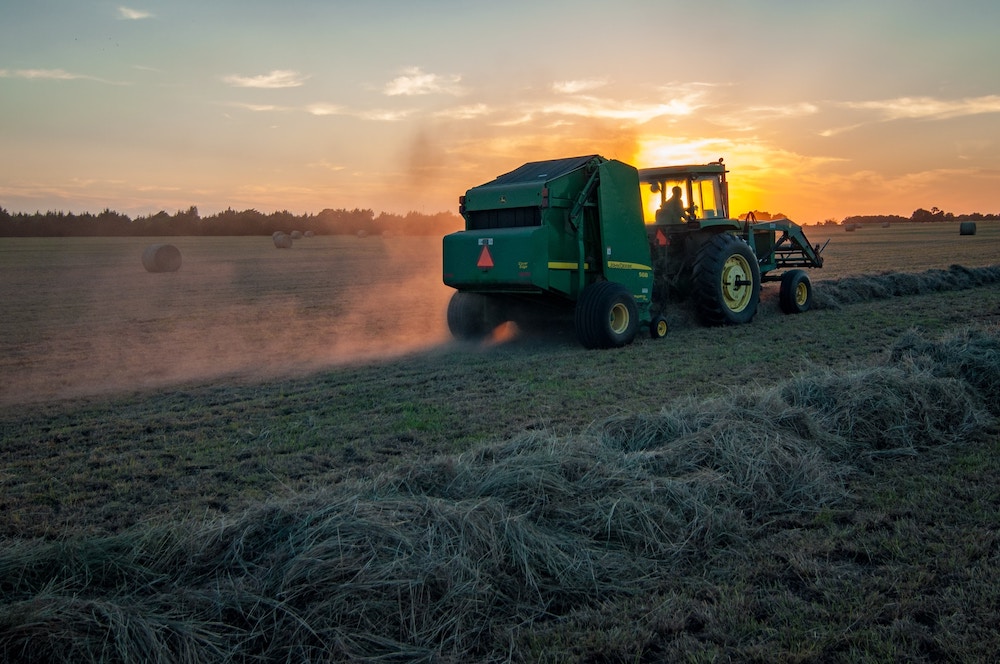
- Details
- By Chez Oxendine
- Food | Agriculture
Native agriculture is in a state of transformation, growing rapidly even as Indigenous producers grapple with issues of food sovereignty, self-determination, and a slow-but-sure leak of participation by young Natives in the farming sector.
Native Americans are increasingly engaged in their own food systems and the broader agricultural sector, gaining more representation in decision-making for sustainability and building alliances between Indigenous organizations to support younger farmers.
These efforts have borne fruit: Native agriculture has nearly doubled in size over the last five years, from a $3.5 billion industry in 2019 to a $6.5 billion industry in 2024, according to data from the United States Department of Agriculture,
The good news arrives even as the number of active Indigenous producers dwindles and existing farmers find themselves working more land, according to the 2022 USDA Census Data. Per that data, the number of American Indian and Alaska Native farmers decreased by 2,000 since 2017, while the amount of farmland controlled by Indigenous farmers increased by 3.2 million acres.
“We are in a significant moment for Native agriculture,” Native American Agriculture Fund CEO Toni Stanger-McLaughlin (Colville Federated Tribes) said last week during an online address on the state of Native agriculture. The event on Tuesday featured Agriculture Secretary Tom Vilsack, Sen. Jon Tester (D-MT) industry experts such as Erin Parker from the Indigenous Food and Agriculture Initiative, and students and young producers discussing their experiences.
It’s important to encourage and support new Native farmers interested in entering the field, while also ensuring that Native producers and advocates have a seat at the table when decisions are being made about programs involving Indian Country, Stanger-McLaughlin said.
“Our tribes, producers, and Native organizations are in some instances being present when decisions are being made about our food waste and agriculture systems for the first time,” said NAAF during the presentation. “We are focused on forward progress, learning from and honoring the work from generations before us, and putting tribes and producers at the forefront of decision-making for the future.”
Stanger-McLaughlin pointed to existing NAAF investments like the group’s yearly grant awards, for which applications are currently being accepted. She also discussed the Native Agriculture Financial Service (NAFS), which NAAF helped found as a separate organization last year in hopes of “building bridges” between Native Community Development Financial Institutions and other lending entities in the Farm Credit System.
Stanger-McLaughlin also discussed work like the Tribal Agricultural Fellowship Program, an internship designed to allow a cohort of Native students to develop experience in agriculture, or a newly minted investment to build a farm business degree at the Native-led Haskell University. These are in addition to NAAF’s wider work supporting programs like the Indigenous Food and Agriculture’s Youth Leadership Summit through its grant awards.
Work like this would help create a “cadre of professionals who are not just skilled in agriculture, but also deeply rooted in the cultural values and traditions that have sustained us for generations,” Stanger-McLaughlin said during her presentation.
It’s work supported by students like Justina Slim, a 23-year-old member of the Navajo Nation and a graduate from the Tribal Agriculture Fellowship. Slim said she hopes to see youth leadership “evolve and grow” through more opportunities like internships, scholarships, and jobs.
Slim said simply showing kids that farming was a viable way to make a living could go a long way towards pulling them toward the industry.\
“It’s simply just exposure,” Slim said. “I know growing up on the reservation, I didn’t have a lot of exposure to the agriculture industry. I grew up on a commercial cow farm, but we didn’t really set it up to have a business structure from the beginning, and I really thought of it as kind of a hobby. I think just increasing agriculture education and exposing younger children to all of the vast career options in the agriculture industry [could help.]”
Youth programs are important because fewer farmers means more income concentrated in fewer places, Agriculture Secretary Tom Vilsack said during the event. Native Americans have lost roughly 155.6 million farming acres and nearly 545,000 farms since 1981.
“There are limits to how long this approach can last,” Vilsack said. “It's clear that we are at a pivotal moment today, where we have the ability to choose a more expansive set of options to create, not diminish, opportunity.”
The USDA has worked to give tribes more support for food sovereignty, more representation in decision making, and more avenues for the growing tribal agriculture economy to generate revenue, Vilsack said.
Vilsack pointed to a number of USDA investments in Native agriculture over the last year, including launching a pilot program to buy bison for food distribution efforts, grants for water, broadband, and local food purchases, and co-stewardship agreements through the US Forest Service with tribes across the country.
Those federal efforts will hopefully expand with the eventual passage of a new Farm Bill. The 2018 Farm Bill’s programs — many of which were considered steps in the right direction for Native agriculture — were extended in January 2024 in the absence of a new bill, but to solidify the USDA’s work, a new bill needed to be put in place, Montana Sen. Tester said during the address.
Tester called the new farm bill “long overdue,” and pointed toward priorities established by the Native Farm Bill Coalition, such as the codification and expansion of self-determination (or “638”) programs piloted by the 2018 Farm Bill, or strengthening communication between the USDA and the Bureau of Indian Affairs to support producers on tribal lands.
“Above all, I want to listen and learn from you,” Tester said. “You’ve got my word that I'll be in your corner in the upcoming farm bill negotiations and beyond.”
